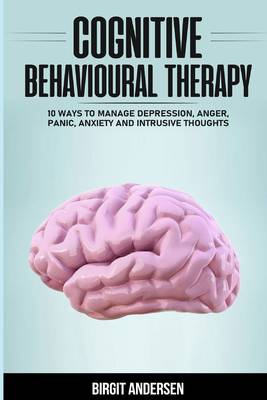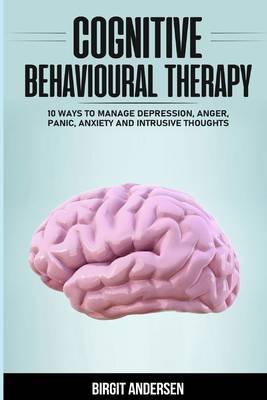
- Retrait gratuit dans votre magasin Club
- 7.000.000 titres dans notre catalogue
- Payer en toute sécurité
- Toujours un magasin près de chez vous
- Retrait gratuit dans votre magasin Club
- 7.000.000 titres dans notre catalogue
- Payer en toute sécurité
- Toujours un magasin près de chez vous
Description
CBT is a proven approach to comprehending and dealing with psychological problems. It is a formal, constructive form of therapy by which the client's expectations are initially set and discussed during treatment. CBT's goal is to help people resolve their emotional problems by assisting them to recognize and change their thinking and actions. The term' cognitive' applies to mind, vision, memory, and attention. The mental problems individuals may face with CBT are different, such as stress, phobias, or anxiety. Also, behaviors that may be consequences of actions and what leads to such emotional difficulties may vary; they include reduced levels of activity, prevention of social situations, or excessive cleaning. For instance, someone who considers himself as a disappointment (cognition) can feel ashamed and discouraged (emotions) and avoid others (behavior). Such coping behavior could then strengthen interpretations and distress. Avoiding others, for example, gives the person less chance to get positive feedback from everyone else. This way, the person gets stuck in a vicious cycle. The cognitive-behavioral approach suggests that people in their current lives will recognize these vicious cycles and then adjust their thoughts and behaviors to decrease their distress; for instance, choosing times where they can meet others (behavior) and thus receive positive reinforcement, which then affects their perception of themselves (cognition). Helping clients recognize the underlying roots of such meanings and coping strategies may send them the impression that, given their past experiences, their beliefs and behaviors can be seen as acceptable consequences, while also recognizing that such beliefs and behaviors may not be the most useful one's today.
Therapy can thus be an incentive for the person to establish beliefs and attitudes that are more beneficial in their current circumstances as they bring less anxiety or damage to them.
CBT has been tested for a wide range of clinical conditions and proof of its usefulness with stress, nausea, agoraphobia, generalized anxiety disorder has been discovered. CBT growth keeps ongoing. Some innovative innovations are being created and studied; for example, extending its use to people with personality disorder diagnosis, integrating mindfulness practice, and improving strategies for functioning at a meta-cognitive level. The book will not include any new theories but will instead concentrate on the' simple' approaches that have been proven and tested with common psychological disorders such as anxiety or depression. Mainstream cognitive behavioral therapy suggests that modifying ill-adaptive thinking leads to behavioral change and effect. However, new versions stress improvements in one's connection to ill-adaptive thinking rather than adjustments in one's mind.
The aim of cognitive behavioral therapy is not to treat an individual with a specific illness, but to look at the person and determine what can be improved. There are various protocols for providing cognitive behavioral therapy, with significant similarities between these. Use of the word CBT may apply to multiple treatments, including' self-instruction (e.g., diversion, imagining, positive self-talk), calming or biofeedback, creation of adaptive coping methods (e.g., avoiding unpleasant or self-defeating thoughts), modifying maladaptive attitudes regarding discomfort, and setting goals.' Treatment sometimes is manualized, with unique technique-driven, simple, precise, and time-limited interventions for a particular psychological disorder. CBT is used in individual as well as social environments, and the methods are often tailored for self-help.
Spécifications
Parties prenantes
- Auteur(s) :
- Editeur:
Contenu
- Nombre de pages :
- 156
- Langue:
- Anglais
Caractéristiques
- EAN:
- 9781801541114
- Date de parution :
- 13-12-20
- Format:
- Livre broché
- Format numérique:
- Trade paperback (VS)
- Dimensions :
- 152 mm x 229 mm
- Poids :
- 235 g







